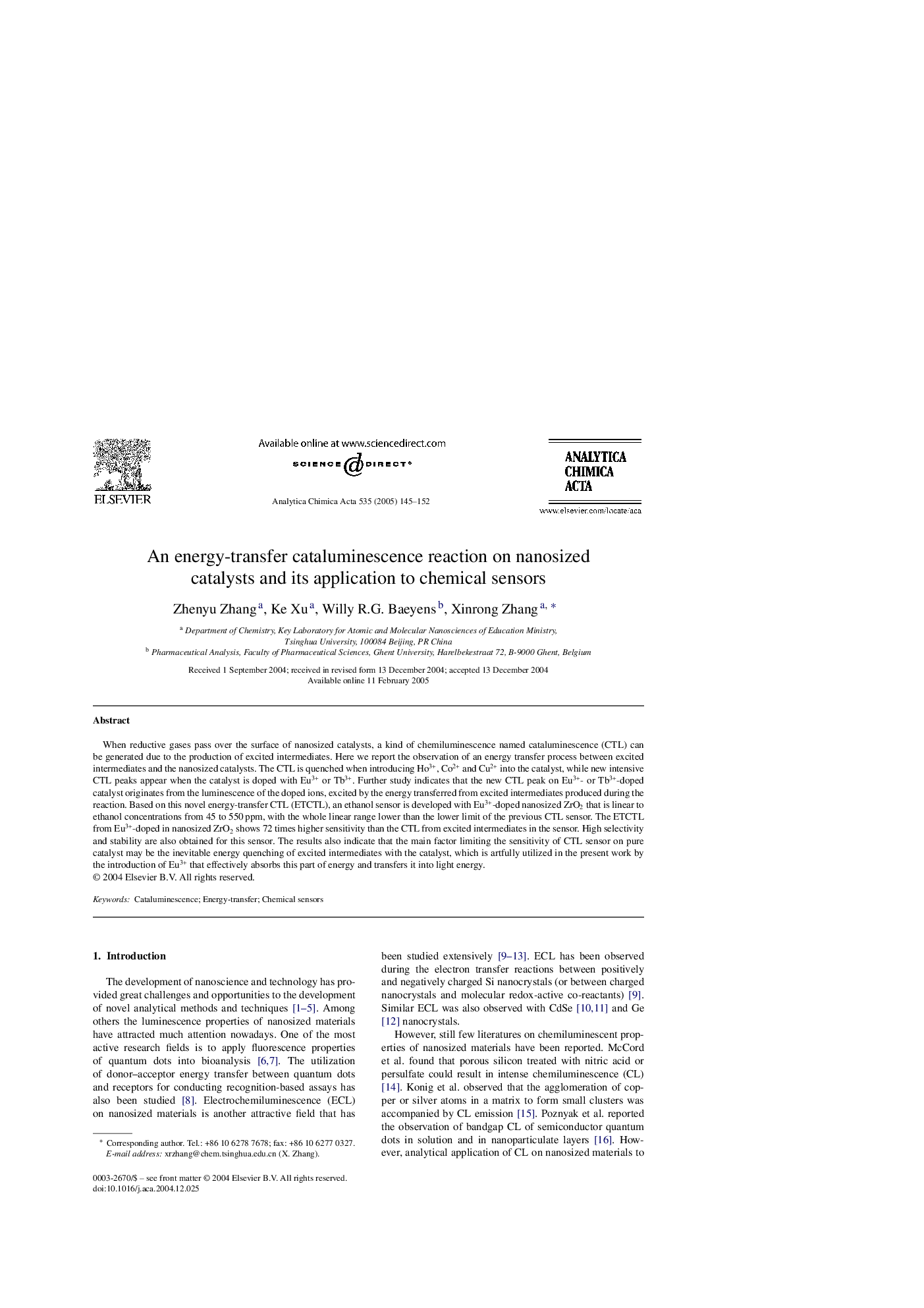| Article ID | Journal | Published Year | Pages | File Type |
|---|---|---|---|---|
| 9743875 | Analytica Chimica Acta | 2005 | 8 Pages |
Abstract
When reductive gases pass over the surface of nanosized catalysts, a kind of chemiluminescence named cataluminescence (CTL) can be generated due to the production of excited intermediates. Here we report the observation of an energy transfer process between excited intermediates and the nanosized catalysts. The CTL is quenched when introducing Ho3+, Co2+ and Cu2+ into the catalyst, while new intensive CTL peaks appear when the catalyst is doped with Eu3+ or Tb3+. Further study indicates that the new CTL peak on Eu3+- or Tb3+-doped catalyst originates from the luminescence of the doped ions, excited by the energy transferred from excited intermediates produced during the reaction. Based on this novel energy-transfer CTL (ETCTL), an ethanol sensor is developed with Eu3+-doped nanosized ZrO2 that is linear to ethanol concentrations from 45 to 550Â ppm, with the whole linear range lower than the lower limit of the previous CTL sensor. The ETCTL from Eu3+-doped in nanosized ZrO2 shows 72 times higher sensitivity than the CTL from excited intermediates in the sensor. High selectivity and stability are also obtained for this sensor. The results also indicate that the main factor limiting the sensitivity of CTL sensor on pure catalyst may be the inevitable energy quenching of excited intermediates with the catalyst, which is artfully utilized in the present work by the introduction of Eu3+ that effectively absorbs this part of energy and transfers it into light energy.
Related Topics
Physical Sciences and Engineering
Chemistry
Analytical Chemistry
Authors
Zhenyu Zhang, Ke Xu, Willy R.G. Baeyens, Xinrong Zhang,
